Abstract
1. The incorporation of [2-14C]acetate, [2-14C]mevalonic acid and [2-14C,2-3H2]-mevalonic acid into torulene and torularhodin by Rhodotorula rubra and Rhodotorula glutinis was studied. 2. A recovery of 14.3% of the label was obtained on decarboxylation of the torularhodin biosynthesized from [2-14C]mevalonic acid. 3. An analysis of the 3H/14C ratio in torularhodin gave a value of 9.44:8. 4. These results, obtained by different experimental techniques, show that the reactions in the conversion of the dimethyl group of isopentenyl pyrophosphate into the 16′,17′-position of torularhodin must be free from randomization. A mechanism for the isomerization of isopentenyl pyrophosphate to dimethylallyl pyrophosphate is suggested.
Full text
PDF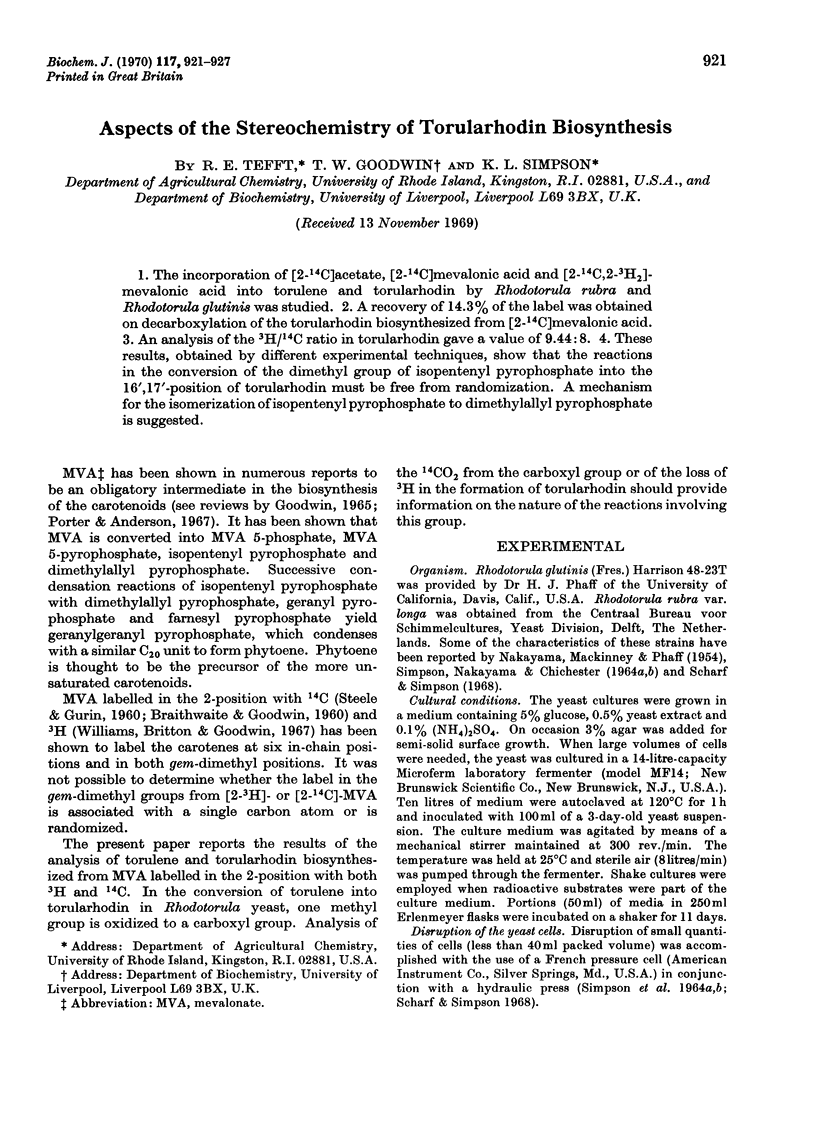
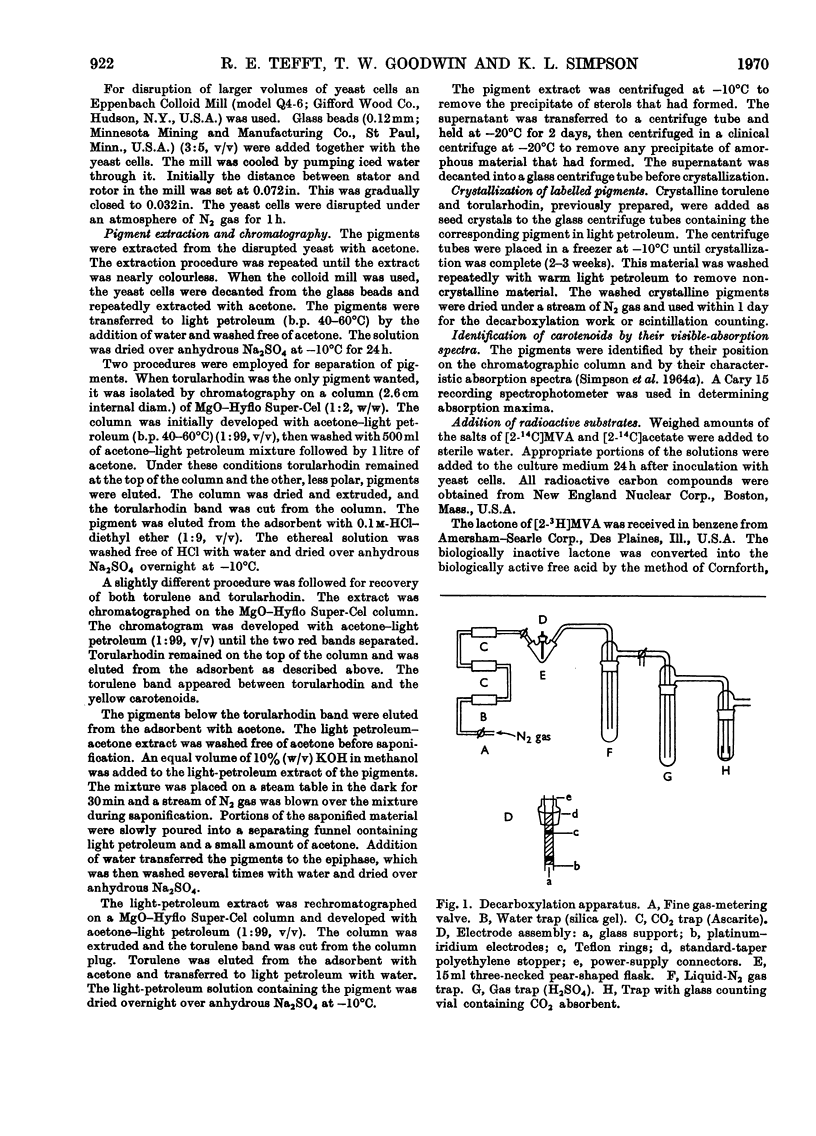
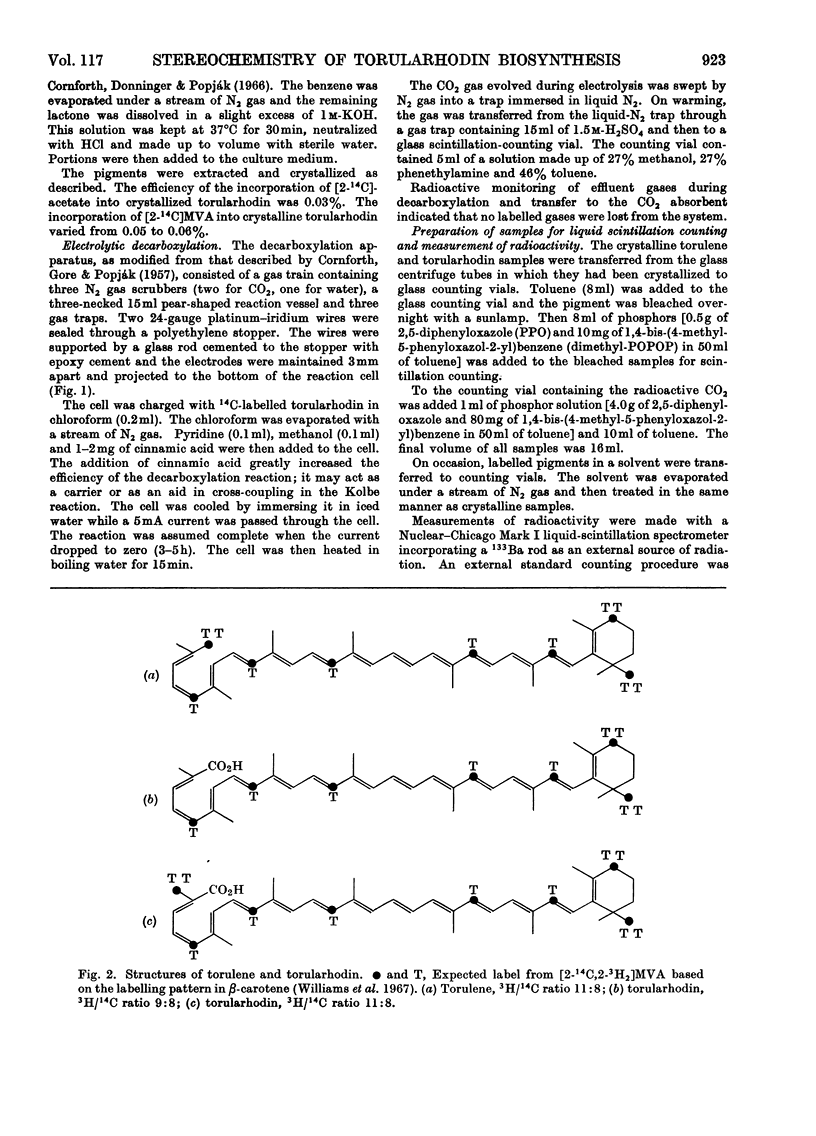
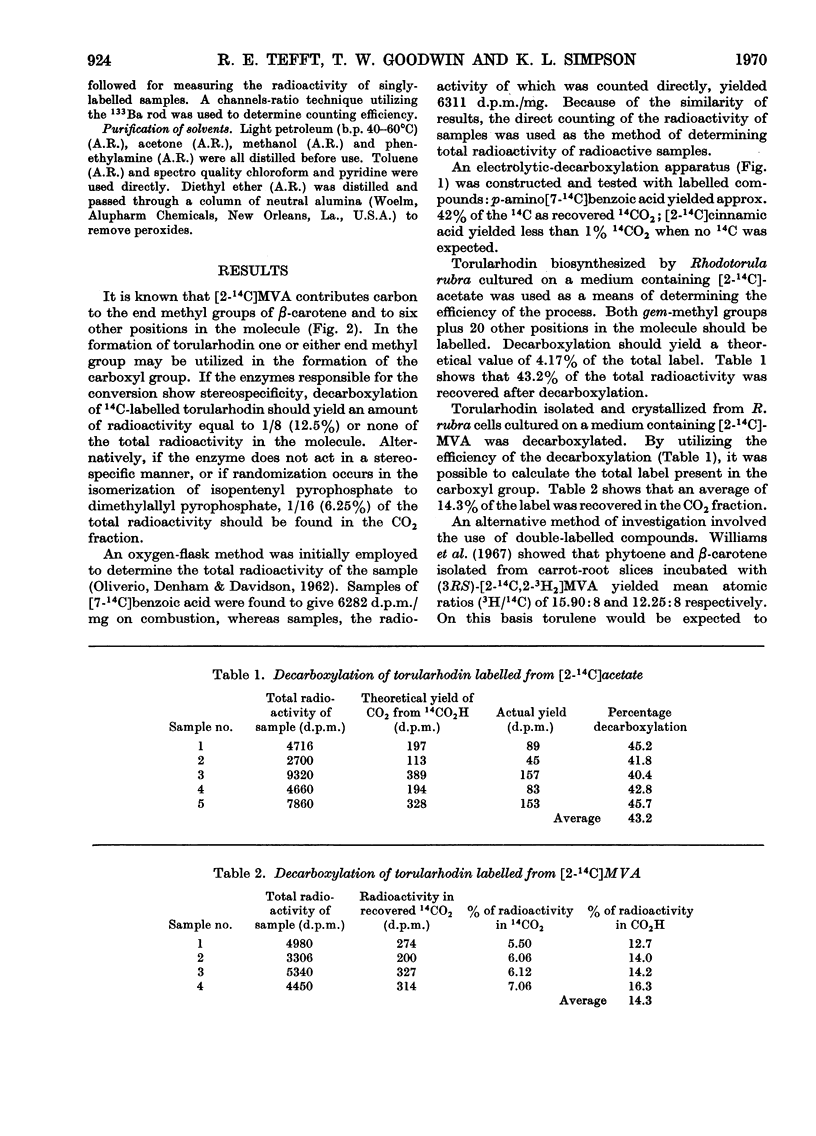
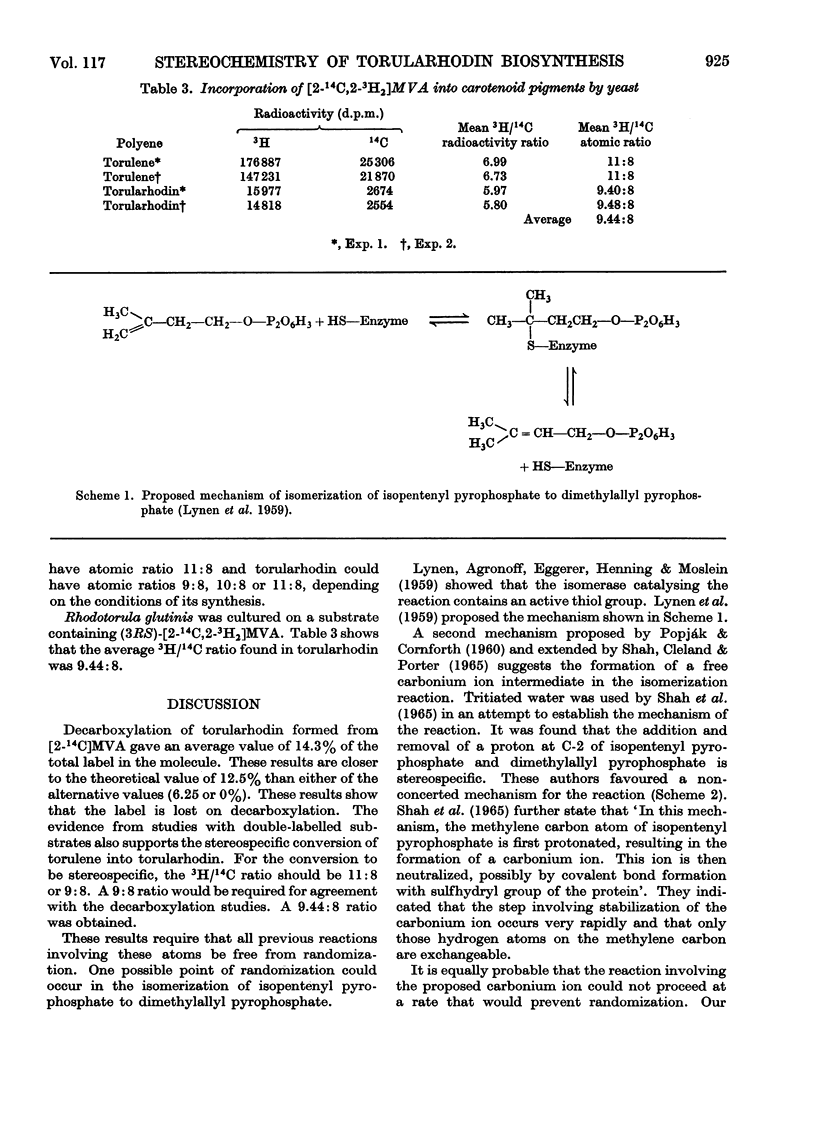
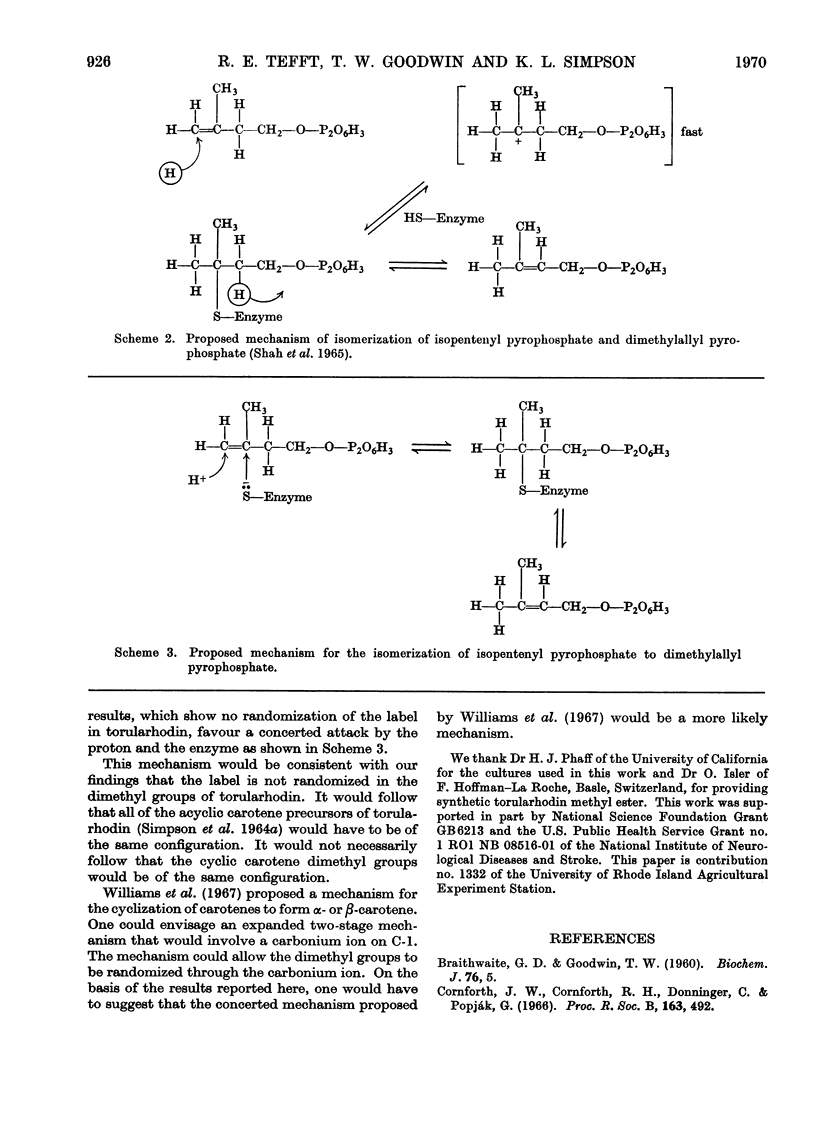
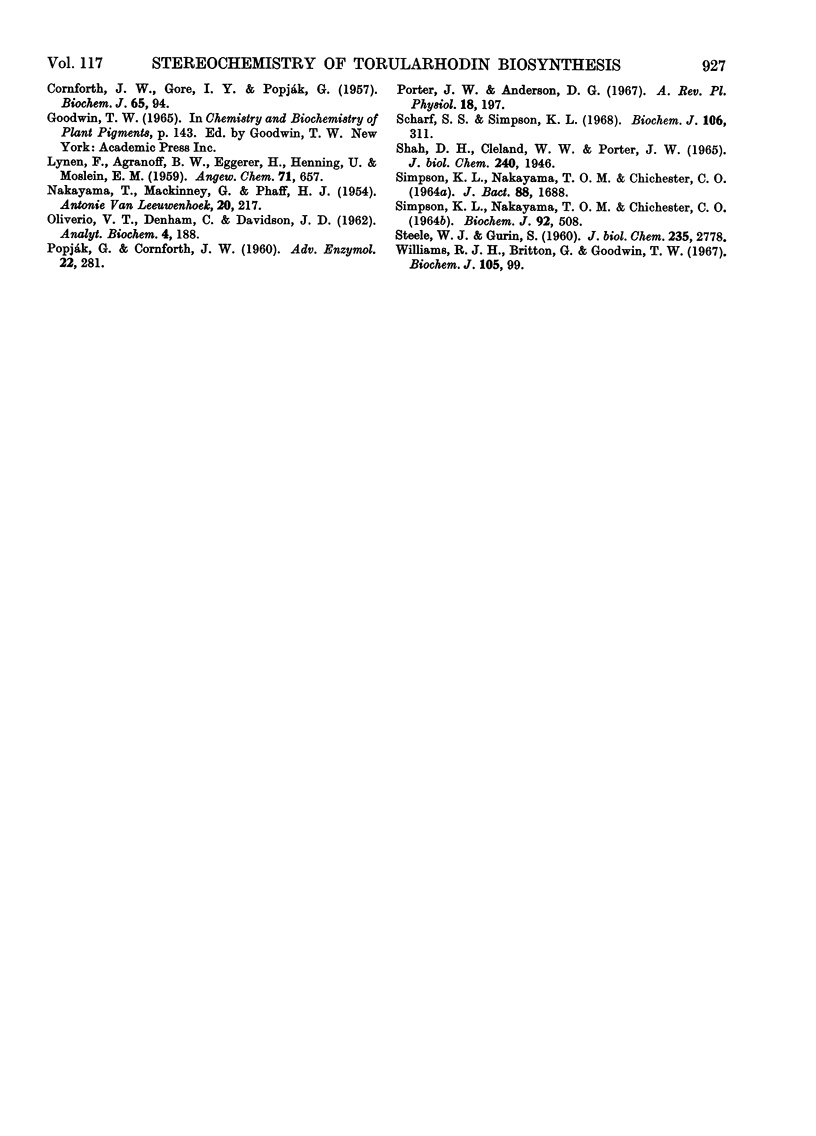
Selected References
These references are in PubMed. This may not be the complete list of references from this article.
- BRAITHWAITE G. D., GOODWIN T. W. Studies in carotenogenesis. 26. The incorporation of [C14] acetate, [C14] mevalonate and C14-labelled carbon dioxide into beta-carotene by the fungus Phycomyces blakesleeanus. Biochem J. 1960 Jul;76:5–10. doi: 10.1042/bj0760005. [DOI] [PMC free article] [PubMed] [Google Scholar]
- CORNFORTH J. W., YOUHOTSKY GORE I. Studies on the biosynthesis of cholesterol. IV. Degradation of rings C and D. Biochem J. 1957 Jan;65(1):94–109. doi: 10.1042/bj0650094. [DOI] [PMC free article] [PubMed] [Google Scholar]
- Cornforth J. W., Cornforth R. H., Donninger C., Popják G. Studies on the biosynthesis of cholesterol XIX. Steric course of hydrogen eliminations and of C-C bond formations in squalene biosynthesis. Proc R Soc Lond B Biol Sci. 1966 Jan 18;163(993):492–514. doi: 10.1098/rspb.1966.0004. [DOI] [PubMed] [Google Scholar]
- NAKAYAMA T., MACKINNEY G., PHAFF H. J. Carotenoids in asporogenous yeasts. Antonie Van Leeuwenhoek. 1954;20(2):217–228. doi: 10.1007/BF02543724. [DOI] [PubMed] [Google Scholar]
- OLIVERIO V. T., DENHAM C., DAVIDSON J. D. Oxygen flask combustion in determination of C-14 and H3 in biological materials. Anal Biochem. 1962 Aug;4:188–189. doi: 10.1016/0003-2697(62)90035-0. [DOI] [PubMed] [Google Scholar]
- POPJAK G., CORNFORTH J. W. The biosynthesis of cholesterol. Adv Enzymol Relat Subj Biochem. 1960;22:281–335. doi: 10.1002/9780470122679.ch7. [DOI] [PubMed] [Google Scholar]
- SHAH D. H., CLELAND W. W., PORTER J. W. THE PARTIAL PURIFICATION, PROPERTIES, AND MECHANISM OF ACTION OF PIG LIVER ISOPENTENYL PYROPHOSPHATE ISOMERASE. J Biol Chem. 1965 May;240:1946–1956. [PubMed] [Google Scholar]
- SIMPSON K. L., NAKAYAMA T. O., CHICHESTER C. O. BIOSYNTHESIS OF YEAST CAROTENOIDS. J Bacteriol. 1964 Dec;88:1688–1694. doi: 10.1128/jb.88.6.1688-1694.1964. [DOI] [PMC free article] [PubMed] [Google Scholar]
- Scharf S. S., Simpson K. L. Attempts to detect lycopersene formation in yeast. Biochem J. 1968 Jan;106(1):311–315. doi: 10.1042/bj1060311. [DOI] [PMC free article] [PubMed] [Google Scholar]
- Simpson K. L., Nakayama T. O., Chichester C. O. The biosynthetic origin of the carboxyl oxygen atoms of the carotenoid pigment, torularhodin. Biochem J. 1964 Sep;92(3):508–510. doi: 10.1042/bj0920508. [DOI] [PMC free article] [PubMed] [Google Scholar]
- Williams R. J., Britton G., Goodwin T. W. The biosynthesis of cyclic carotenes. Biochem J. 1967 Oct;105(1):99–105. doi: 10.1042/bj1050099. [DOI] [PMC free article] [PubMed] [Google Scholar]


